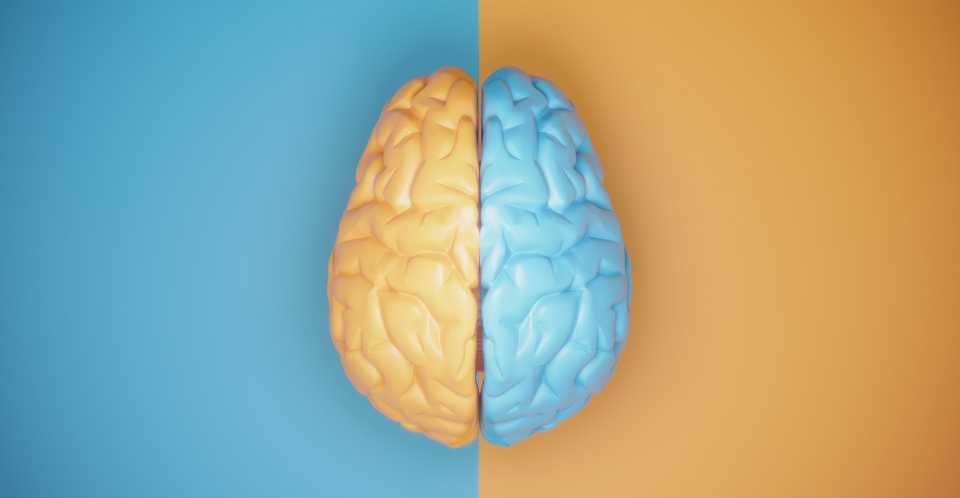For information about different areas of the human brain, start with the following articles:
An introduction to the cerebellum – What Is The Cerebellum?
An introduction to the Neocortex: What Is The Neocortex?
A definition of the Prefrontal Cortex (also see The Ventromedial Prefrontal Cortex and the Orbitofrontal Cortex)
The adult human brain weighs on average about 1.2–1.4 kg (2.6–3.1 lb) which is about 2% of the total body weight, with a volume of around 1260 cm3 in men and 1130 cm3 in women, although there is substantial individual variation.
Neurological differences between the sexes have not been shown to correlate in any simple way with IQ or other measures of cognitive performance.
The Cerebral Hemispheres
The cerebrum, consisting of the cerebral hemispheres, forms the largest part of the brain and overlies the other brain structures. The outer region of the hemispheres, the cerebral cortex, is grey matter, consisting of cortical layers of neurons. Each hemisphere is divided into four main lobes – the frontal lobe, parietal lobe, temporal lobe, and occipital lobe.
Three other lobes are included by some sources which are a central lobe, a limbic lobe, and an insular lobe.
The brain is protected by the skull, suspended in cerebrospinal fluid, and isolated from the bloodstream by the blood–brain barrier.
Underneath the cerebral cortex are several important structures, including the thalamus, the epithalamus, the pineal gland, the hypothalamus, the pituitary gland, and the subthalamus; the limbic structures, including the amygdala and the hippocampus; the claustrum, the various nuclei of the basal ganglia; the basal forebrain structures, and the three circumventricular organs.
Neurons And Neurotransmitters
The cells of the brain include neurons and supportive glial cells such as astrocytes and microglia. There are more than 86 billion neurons in the brain, and a more or less equal number of other cells. Brain activity is made possible by the interconnections of neurons (synapses) and their release of neurotransmitters in response to nerve impulses.
Some important neurotransmitters include:
Serotonin
Glutamate
Norepinephrine
Dopamine
and GABA
as well as various neuropeptides.
Last Updated on October 31, 2022
